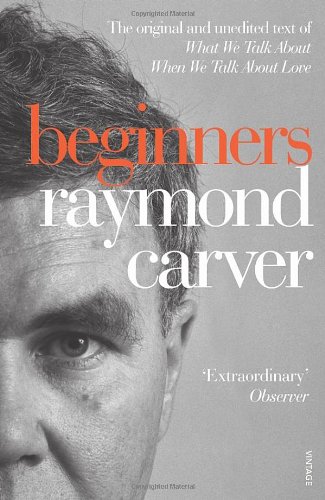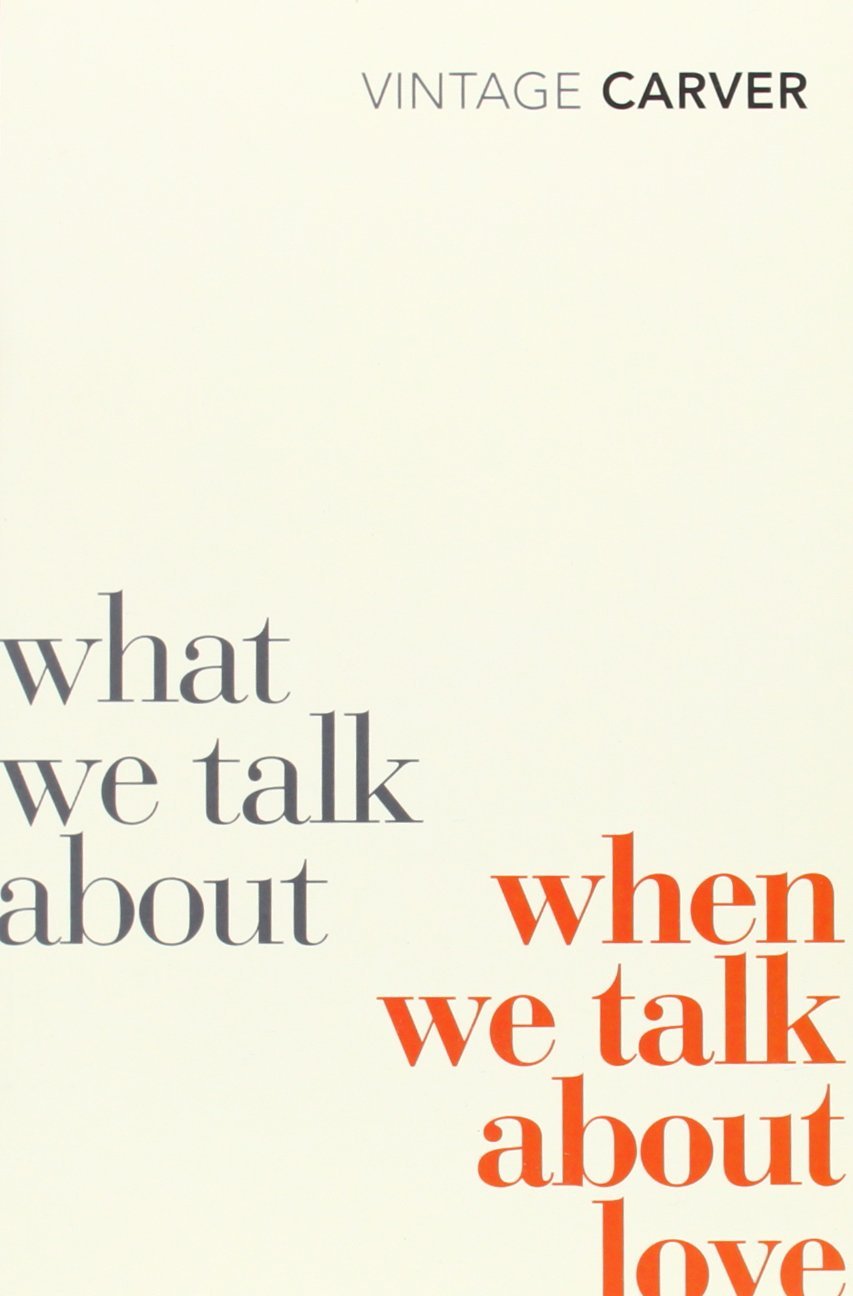
photo by Malloreigh
In her essay, shortlisted for the 2014 THRESHOLDS International Short Fiction Feature Writing Competition, Angela Readman explores the unedited version of Raymond Carver’s story ‘So Much Water So Close to Home’.
*
Comments from the judging panel:
‘A good analysis of Carver’s stories and the effects of Lish’s edits’; ‘an interesting, thought-provoking approach’; ‘unique and well-balanced’.
*
by Angela Readman
I recently picked up a different copy of Raymond Carver. Entitled Beginners, the book includes longer versions of stories from What We Talk About When We Talk About Love. Tess Gallagher published it after Carver’s death and the differences are striking.
When we talk about editing short stories, and we do, a lot, we talk about cutting every word that doesn’t have to be in a story. But I’m not sure it’s always so simple. Though I love Carver’s minimalist drafts, notoriously edited by Gordon Lish, in some much is lost.
In ‘A Small, Good Thing’ we’re left hanging. The boy doesn’t die. The baker meets no one. Strangers don’t feel compassion. The reader never gets to smell the muffins and feel a hunger we didn’t know we had. It’s a loss.
But a bigger loss, for me, was found in ‘So Much Water So Close to Home’, though the plot doesn’t differ between the two versions. Both stories concern a wife’s reaction to her husband discovering a woman’s body on a fishing trip. It’s written from a woman’s point of view. I love Carver’s work, but his stories are mostly about men. Women are present, or absent, lives fall apart around this, but, with the exception of the odd story such as ‘Fat’, his work rarely attempts to reach out to a female reader. Generally, his stories are places women don’t fair well.
However, the longer, unedited version of ‘So Much Water So Close to Home’ alters my perception on Carver’s women. As I read it, I felt: he gets how it can feel to be a woman. He shows an understanding of women, an empathy. This is created not by words being cut, but added. The story becomes about more than one wife and husband, it inspects the differences between the sexes. Claire feels ‘smothered’ in a masculine world and we feel her awareness of herself.
I close my eyes for a minute and hold onto the drainboard. I must not dwell on this any longer. I must get over it, put if out sight, out of mind, etc and ‘go on’. I open my eyes. Despite everything, knowing all that may be in store, I rake my arm across the drainboard and send dishes and glasses smashing and scattering across the floor.
He doesn’t move … I hate him for that, not moving … The wind takes the smoke out of his mouth in a stream. Why do I notice that? He can never know how much I pity him for that, for sitting still and listening, and letting the smoke stream out of his mouth.
This passage, like others, is briefer in What We Talk About When We Talk About Love:
I close my eyes and hold onto the sink. Then I rake my arm across the drainboard and send the dishes to the floor. He doesn’t move. I know he’s heard.
 The longer description recreates the woman’s experience. The action is identical, smashing dishes, but we’re closer. We see her torn between not wanting a scene and her feelings. She hears the dishes vividly, ‘smashing and scattering’. There’s conflict in studying her husband’s reaction, fixating on one detail of his cigarette. The use of pity matters. One minute she hates him, the next she pities him. The complexity of relationships is clear – love and hate live close-by. There’s also a sense of some things Claire can’t communicate to him, which ‘he will never know’. This is crucial. Throughout the story, communication between the sexes is problematic.
The longer description recreates the woman’s experience. The action is identical, smashing dishes, but we’re closer. We see her torn between not wanting a scene and her feelings. She hears the dishes vividly, ‘smashing and scattering’. There’s conflict in studying her husband’s reaction, fixating on one detail of his cigarette. The use of pity matters. One minute she hates him, the next she pities him. The complexity of relationships is clear – love and hate live close-by. There’s also a sense of some things Claire can’t communicate to him, which ‘he will never know’. This is crucial. Throughout the story, communication between the sexes is problematic.
The differences between men and how it sometimes feels to be a woman reoccur. There’s a sense of voyeurism in the prose, not only through a male eye, but a woman’s. Claire seems acutely aware of the fragility of the female body and its relationship to men. She vividly pictures the fishermen and the woman’s body her husband, Stuart, discovers. Her imagination voices feelings she can’t explain.
Someone thought they should do something to prevent the body from floating away. Somehow they thought that this might create a problem for them if it floated away during the night … One of the men, I don’t know who, it might have been Stuart, it could have been Stuart, he could have done it, waded into the water and took the girl by the fingers and pulled her, still face down, closer to the shore, into the shallow water, and then took a piece of nylon cord and tied it around her wrist and then secured the cord to the tree roots, all the while the flashlights of the other man played over the girl’s body…
The sentence keeps going, relentless, unearthing details and feelings. There’s a sense of Claire re-evaluating her husband and wondering what he’s capable of. ‘It could have been Stuart, he could have done it’ – she’s working out who he really is.
Later, the identified body creates a similar sense of violation. In the autopsy process, ‘looking for rape’ is described, recreating Claire’s claustrophobic awareness of everyday objectification. The sense of women’s experiences is contained in the details. The helpful mechanic wants to check Claire’s tyres before the funeral, ‘it’s a long drive for a woman’. Everywhere she goes she appears unable to escape casual voyeurism. Even her son asks about the body, ‘Was it a girl? What did it look like?’ The problem isn’t restricted to Stuart, but our culture. Dark attitudes under the surface of life are revealed.
Though Stuart’s actions don’t change, there’s a sense he feels sorry, even guilty, in the longer story. His dialogue attempts to justify something, not only to his wife, but to himself. The repetition of ‘we’ desperately attempts to shift focus from himself.
“Goddamn it, why don’t people mind their own business. Tell me what I did wrong and I’ll listen. It’s not fair. She was dead wasn’t she? There were other men there beside me. We all decided. We’d only just got there. We’d walked for hours. We couldn’t just turn around, we were five miles from the car. It was opening day. What the hell, I don’t see anything wrong. No, I don’t. And don’t you look at me that way, do you hear? I won’t have you passing judgement on me. Not you.”
There’s a conflicted masculinity to Stuart throughout. He feels emotions in this draft, but can’t access ways to express them. After the funeral, Claire returns to find him ‘with a drink in front of him. His eyes are red and for a minute I think he has been crying.’ He appears to want to make amends, but resorts to anger as a default. “I hope you’re feeling better about this. Try and understand, that’s all I ask.” Though he gets irritated, there’s a sense of desperation for the argument to stop, “You’re going to get me riled in a minute. How about it now? Claire?” This vulnerability is lacking in the edited version: “I don’t know what’s wrong with you,” he says, “you’re getting me more riled by the minute.” Nothing is open.
Miraculously, the longer story is both more brutal and more tender. Claire wants to let it lie, but can’t change her feelings. Stuart wants to be caring, but doesn’t know how. “What are you afraid of, Claire? I’d like to help, just try me. That’s what husband’s are for.” When she can’t explain, he attempts to make her feel better by a sexual advance. His response to rejection is the hardest line of dialogue I’ve ever read.
He leans down and says, “You go to hell, then, do you hear, bitch? I hope your cunt drops off before I touch it again.” He sobs once and I realise he can’t help it, he can’t help himself either. I feel a rush of pity for him as he heads for the living room.
In the space of two pages, Stuart wants to understand, calls her a bitch, sends flowers, says ‘I love you’, and smashes the lock on the room where Claire’s sleeping. It’s as if he is running through every gesture he knows to stumble across what will fix his wife. Faced with her, and feelings, he is lost.
 Last night, around midnight, Stuart breaks the lock on my door. He does it just to show he can, I suppose, for he doesn’t do anything when the door opens except stand there in his underwear looking surprised and foolish while the anger slips from his face.
Last night, around midnight, Stuart breaks the lock on my door. He does it just to show he can, I suppose, for he doesn’t do anything when the door opens except stand there in his underwear looking surprised and foolish while the anger slips from his face.
This emotional impotence is absent in the edit. Claire’s sympathy for her husband, his wanting to be with her, but lacking all ability to express it, is gone. It’s as if the sexes speak different languages. He knows nothing but gestures. Repeatedly, his attempts at intimacy involve sex or aggression.
There’s a glaring omission in the edited story. The longer story mentions the murder victim’s name several times, the short cut doesn’t at all. The narrative itself is subject to the same detachment the fishermen have. This doesn’t align with the story’s female perspective. The men have lost sight of the body being more than something that happened, it’s someone. Claire doesn’t lose sight and would learn the name. It matters.
He asks us to pray in silence for the soul of Susan Miller, departed. I close my eyes and remember her picture in the newspapers and on television. I see her leaving the theatre and getting into a green Chevrolet. Then I imagine her journey down the river, the nude body hitting rocks … He talks about Susan miller’s gifts: cheerfulness and beauty, grace and enthusiasm. From behind the closed curtain someone clears his throat, someone else sobs.
The passage allows us to feel the death. One woman speaks about giving the deceased cookies as a child, she ‘looks off and begins shaking her head as the tears roll down her cheeks.’ The edit cuts her tears. In fact, there’s a lack of sympathy throughout:
“I’m going to a funeral tomorrow,” I say.
“I’m sorry to hear that,” Marnie says.
“It was a murder,” I say.
“That’s the worse kind,” she says.
This feels out of character, given Claire’s feelings. Would she really blurt out it was murder like juicy gossip? Carver’s original shows more affinity:
“I’m going to a funeral tomorrow,” I say after we have talked a bit about the girl that no longer works here.
Millie looks up and then back at my fingers. “I’m sorry to hear that, Mrs Kane. I’m real sorry.”
“It’s a young girl’s funeral,” I say.
“That’s the worst kind. My sister died when I was a girl, and I’m still not over it to this day. Who died?”
They speak about people, the girl who worked there, a personal loss. No one asks how someone died. She asks, instead, who she was. The who of the story is lost in the edit. For me, too much is lost and Carver no longer speaks to women using their language.
Often, when we talk about editing, we talk about cutting. Perhaps considering the reasons for repetition, longer descriptions and sentences could be useful, instead. Their impact can sometimes be more powerful than plot.


I really enjoyed this essay…The Carver unediteds have been on my ‘list’ for ages, but now with a greater urgency! One point – not really to do with Carver – struck me, where you say ‘he never tried to reach out to female readers’, implicitly, because he wrote as and about men…… a point for much discussion there, I think.
glad you liked the essay, it’s really worth reading the unedited stories, they are so different. I agree, how much the work reaches out to women is a point that could be an essay in its own right. There are some stories that do if I look for it, I think, but overall there are so many men cheating on women it is harder to see. I think in some later stories like this, Boxes, and Blackbird Pie he really does reach out to women readers, it is as if he had developed a greater understanding of women and was considering their side of things more.I love that, but then again, I love all his stories, even the ones where women don’t feature as much.
At the risk of being considered a Philistine, I’m going to come out and say I have never really ‘got’ Carver’s appeal. I’d never thought about why, but the emotional ‘detachment’ of his work, identified in your article,is probably the reason. Great essay, Angela.